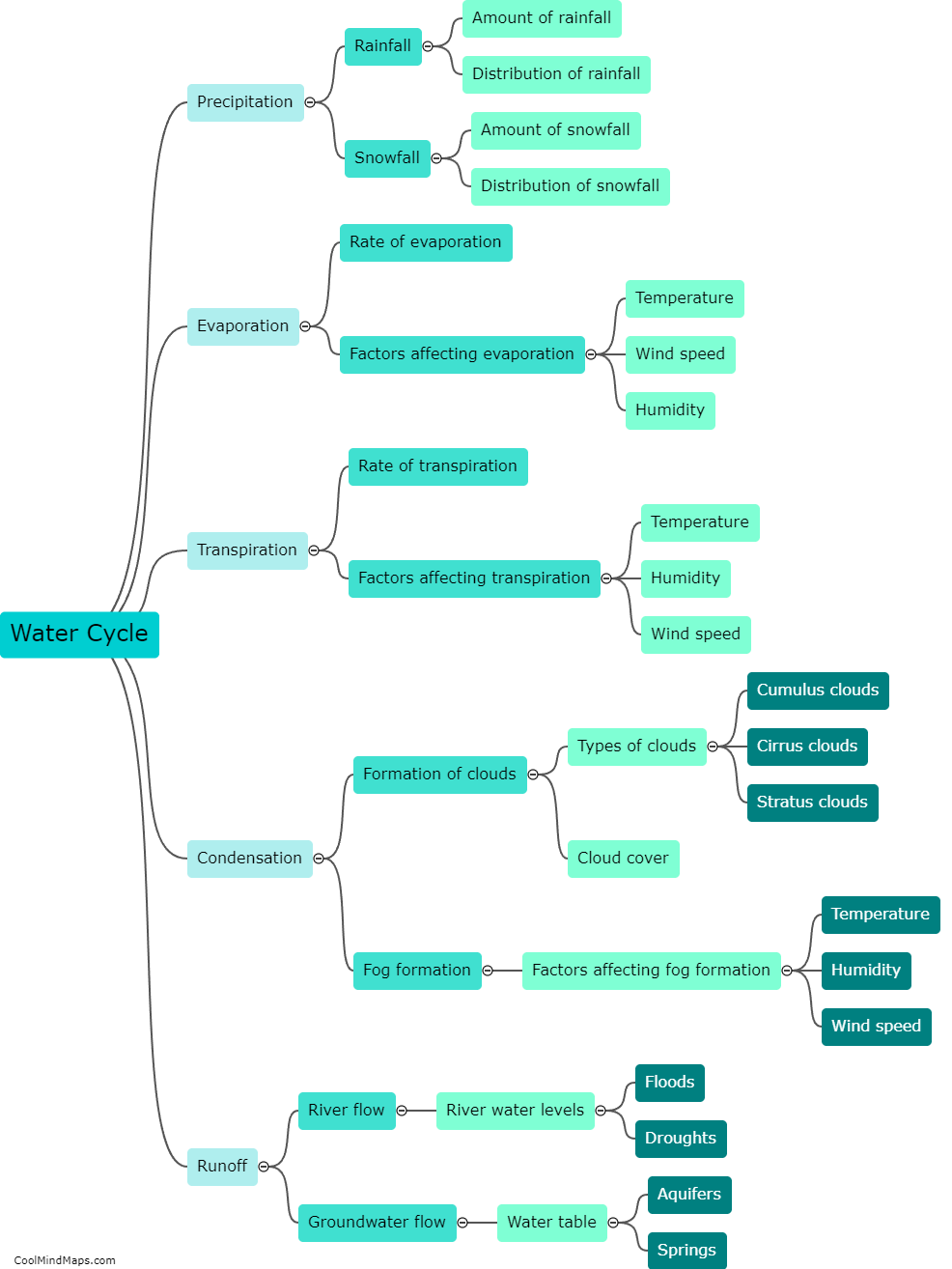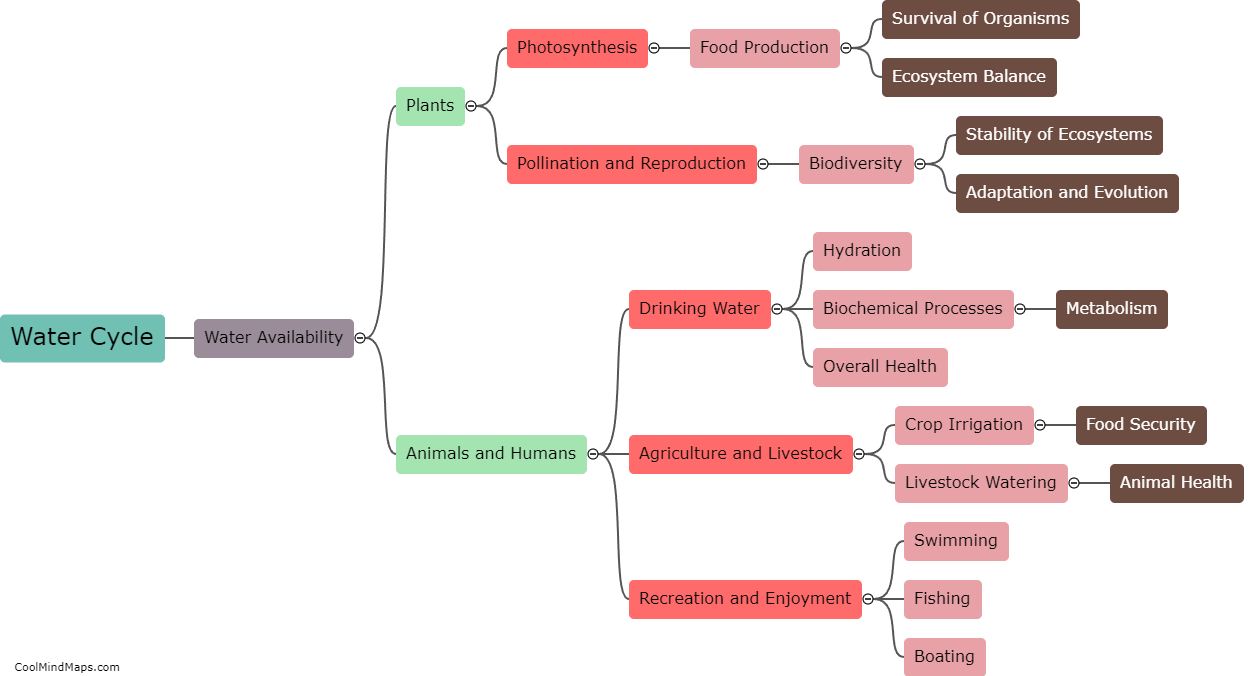How does the water cycle affect climate?
The water cycle plays a crucial role in shaping Earth's climate by redistributing heat and moisture across the planet. As water evaporates from the Earth's surface, it rises into the atmosphere where it cools and condenses to form clouds. This process releases heat, which helps drive atmospheric circulation. Precipitation from these clouds then falls back to the surface, replenishing the Earth's water supply. This constant movement of water helps regulate temperatures, with evaporation and precipitation acting as natural air conditioners. Additionally, the water cycle distributes moisture, which influences humidity levels and cloud formation, both of which impact local weather patterns. Changes in the water cycle can have profound effects on regional and global climate, influencing temperatures, precipitation patterns, and atmospheric circulation.

This mind map was published on 27 November 2023 and has been viewed 80 times.











